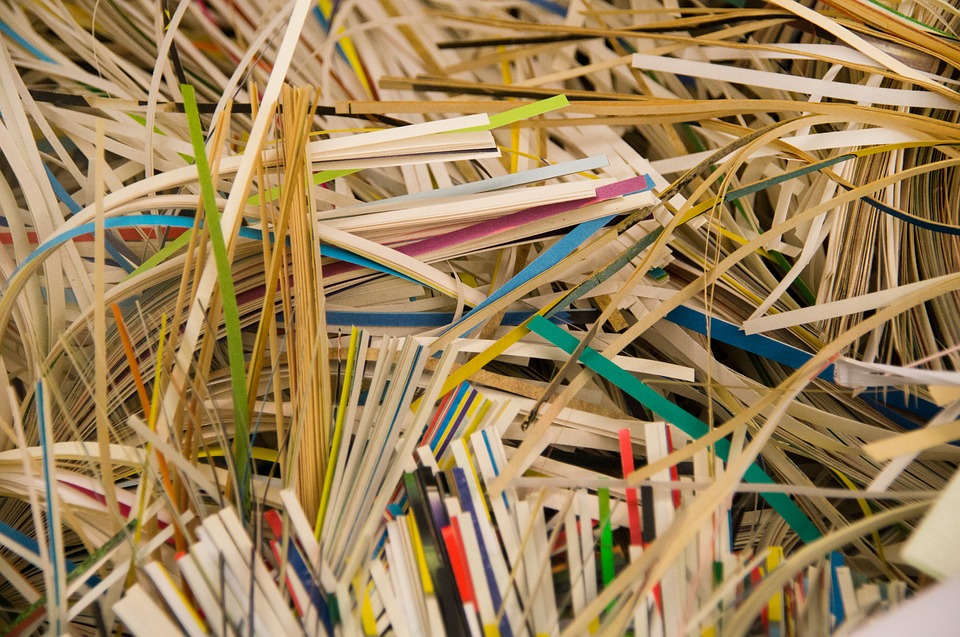How to avoid plagiarism in writing, and why should you care?
Why check essay for plagiarism before submitting it for the teacher’s review?
What is plagiarism, after all, and how do you know if you’ve broken the rules or violated academic integrity?
Keep reading for the answers! In this article, you’ll discover the difference between intentional plagiarism and accidental plagiarism and get surefire strategies for writing non-plagiarized essays like a pro.
What Is Plagiarism?

It can be obvious, like copying and pasting a paragraph from a website into your essay, or subtle, like paraphrasing someone’s thoughts without mentioning the source.
Either way, it’s a serious issue in writing and education.
Think of it like this:
How would you feel if someone took your original Instagram post, slapped their name on it, and called it theirs? That’s plagiarism in action.
In education, students get heavy penalties for plagiarising an original author or copying words from another source. It’s a form of academic dishonesty, a violation of integrity whose consequences range from dropping grades or failing an exam to expulsion from the university.
However:
That doesn’t mean you can’t use the writings or words ideas of other authors in your texts. On the contrary, any teacher will tell you that you should be doing this! Citing sources is a must in academic writing, as you need to support all the statements, claims, and arguments with reputable evidence. The trick is to use others’ words and ideas correctly and give them proper credit in your essays.
Intentional vs. Accidental Plagiarism
While some students might copy online texts for their dissertation writing topics or art argumentative essay topics intentionally, — yeap, they are aware that they are cheating, but what can we do? — others may fall victim to accidental (unintentional) plagiarism.
Unintentional plagiarism happens when you accidentally use someone else’s work without proper credit. It’s not because you’re trying to cheat but because you made a mistake or didn’t know the rules.
You might think, “But I didn’t mean to!” Yes, fair point. But here’s the thing: intent doesn’t change the result. Whether it’s deliberate or accidental, plagiarism is still plagiarism in the eyes of your professor or editor.
When does accidental plagiarism happen?
- Poor paraphrasing: You rewrite a sentence from a source by changing a few words but keep the original structure or phrasing. If you don’t also cite the source, that’s plagiarism—even if you thought you were doing it right.
- Forgetting to cite: You took notes, used a brilliant idea, and forgot where it came from. If you include it in your paper without attribution, you’ve plagiarized, whether or not you remember the source.
- Overusing common knowledge: Some facts (like “George Washington was the first U.S. president”) are common knowledge and don’t need a citation. But others might not be so clear-cut. Misjudging what counts as “common” can lead to accidental plagiarism.
- Misquoting or missing quotation marks: You pull a direct quote from a book or article but forget to put it in quotation marks or don’t cite it correctly. Even with good intentions, it still counts as plagiarism.
- Over-reliance on auto-citations: Relying too much on tools like citation generators without double-checking the format or content can lead to misattributions, which cause unintentional plagiarism.
- Self-plagiarism: Yes, this is a thing! If you copy and paste from a paper you’ve written before and submit it as “new,” you’re still breaking academic rules.
Unintentional plagiarism doesn’t make you a bad writer. It means you’ve got more to learn (and that’s okay!). With awareness and a little practice, you can avoid these slip-ups and create work you’re proud of.
Below, we’ll tell you how to avoid plagiarism in academic writing.
Top 3 Strategies for Avoiding Plagiarism in Student Writing
All universities, colleges, and schools declare plagiarism a crime and an offense, seeing it as a core problem of today’s educational process.
(Especially now, after the boom of AI writing tools, when many students choose to generate their essays via assistants like ChatGPT instead of writing them from scratch. Guess what? ChatGPT copies material from the internet, so it’s also somewhat of a cheater.)
Hundreds of books, websites, and other sources offer guidelines on how to avoid plagiarism in research and writing. We’ll save you time and share a short yet comprehensive tutorial with proven ways to protect your work from plagiarism accusations.

1. Citing
This is the easiest and the most obvious way to avoid plagiarism and craft a reference list for your academic paper:
Understand what sources you need to cite.
If you’re using someone else’s ideas, data, statistics, quotes, or even unique wording—credit it! You’re safe if it’s common knowledge (like “Water boils at 100°C”). When in doubt, cite it out.
Carefully note all the information you find while researching.
It’s easy to lose track of where that brilliant idea came from when you’re juggling five tabs and writing at midnight. Create a list of sources as you go—it’ll save you time (and stress) later.
When citing, follow the required style guide and use it throughout your paper, including the works cited page and the appendix. Whether it’s APA, MLA, or Chicago, stick to one citation style: Learn the basic rules or use a citation tool to help format references properly.
Extra read: What is an appendix in writing |
2. Quoting
The second proven method to avoid plagiarism in writing is to quote others’ words directly. It’s fast and easy as it doesn’t require additional work from your side: You copy the author’s words using the proper formatting and refer to the source.
Important! Use direct quotes sparingly:
No one wants to read a work or assess it highly if it’s nothing but quotes. Your essay or other paper is about your thoughts and arguments, not a collection of sayings from other writers, even if they are experts on the topic under discussion.
Quoting seems easy, but students sometimes forget about the basic rules:
- Put the words in quotation marks.
- Cite the author.
- Don’t quote general facts to increase the word count in your essay.
- Cite the author even if you paraphrase the quote by turning it into indirect speech.
- Self-quoting is fine if you mention your ideas from previous works. (Thus, you’ll avoid self-plagiarism.)
The rules on quoting in different citation styles will be helpful when you’re wondering how to do coursework: Every style has a detailed guide with the requirements, so ensure that you’ve checked and understood them before writing the draft.
3. Proper Paraphrasing
This one is tricky but crucial for creating a high-quality essay. It’s challenging to avoid paraphrasing while writing, and it’s okay to use it for academic papers. The problem is that many students do it wrong:
- They just swap out a few words.
- They preserve the original sentence structure.
- They copy more than two words in a row without quotation marks.
- They combine the author’s words with personal statements, presenting the result as their own.
Look:
Paraphrasing isn’t a mere rewriting in your own words; it’s an interpretation of the original text in your own words, i.e., you describe how you understand the author’s idea. When paraphrasing, you not only modify the vocabulary of the passage, but also change its structure and tone:
Express the idea in your own writing style, and always mention the source.
How to paraphrase?
Use your writing style, vary your vocabulary (use synonyms), and change the structure of the original sentences. Write with your words, describing how you understand the idea you’re trying to paraphrase.
There is no need to use synonyms for generic words or to try to sound smart with lengthy, sophisticated expressions. Whether you are thinking about how to start a diagnostic essay with a paraphrase in the hook or want to rewrite a counterargument to your thesis in a critical essay, do your best to sound authentic and natural, not robotic.
Bonus: Summarising
One more helpful way to avoid plagiarism is summarizing. How does it differ from paraphrasing?
Paraphrasing | Summarising | |
Meaning | Restating a specific idea or passage from a source in your own words, without changing the original meaning | Condensing a larger portion of text (a paragraph, article, or whole book) into a shorter version that only includes the core points |
Purpose | Reword specific info in your own voice | Give a brief overview |
Detail | Keep most of the original details | Only include the main ideas |
Length | About the same as the original | Much shorter than the original |
Citations? | Yes | Yes |
Use paraphrasing when:
- You want to keep the original idea but match it to your writing style.
- You need to reword a quote to make it flow better in your paper.
- You’re explaining a complex idea in a simpler way.
Use summarizing when:
- You should briefly overview an article, chapter, or topic.
- You’re highlighting only the most essential ideas.
- You need to give context quickly without overwhelming readers.
Using this method, you should emphasize the central idea and ignore negligible details. It is the same technique that you use when attending a lecture, but mind the gap between how you would write notes for yourself and the rules of academic writing you need to follow in your paper. Your summary is not only a shortened version of the original passage; it’s a well-structured, properly paraphrased, and well-presented piece of writing crafted from scratch.
Start with your thoughts and use sources to support them—not vice versa. The more original your writing is, the less likely you will fall victim to accidental plagiarism.
A tip:
Run your essay through a reliable plagiarism checker to catch unintentional duplications before your teacher does. (Feel free to try the one here at EssayShark.) Think of plagiarism checkers and AI detectors as your spellcheck for originality.
Over to You
Plagiarism isn’t just about rules and academic integrity. It’s about respecting other people’s work and building trust in yours. With some care and practice, you’ll avoid it and become a more confident writer.
So, the next time you work on an essay, remember these tips—and write with honor!
Do you need help with your paper or want to ensure that it’s 100% original? EssayShark has got your back with expert writers and plagiarism-free guarantees.








